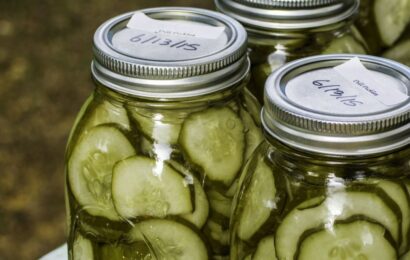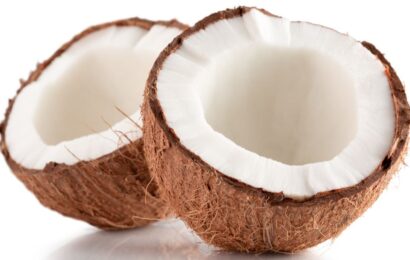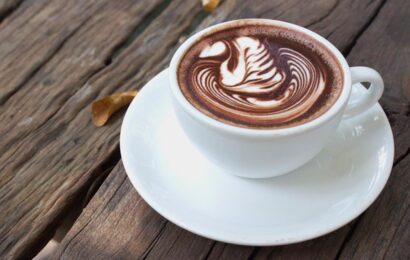Dietitians and nutrition guidelines recommend that we eat a lot of fruits and vegetables for good health. But if you have diabetes, you might be confused — and maybe concerned — when it comes to fruit. After all, fruit is pretty much all carbohydrate, and carbohydrate raises blood sugar levels. So, the logical reasoning is that fruit raises blood sugar, therefore, fruit is “bad.” But is that really true? And what about bananas — should you avoid those if you have diabetes?
Banana basics
Bananas are the ultimate comfort fruit: they’re sweet and creamy, they have no seeds, they’re easy to peel (so no sticky juices on your hand), they’re convenient (just throw one in your bag), and yes, they taste good.
What’s the scoop on bananas? First off, bananas come from the Musaceae family of tropical plants, and the scientific name for banana is Musa, named after Antonius Musa, a personal physician to the Roman emperor Octavius Augustus. We can thank Dr. Musa for promoting the cultivation of bananas, and we can also thank the Spanish missionary Friar Tomas de Berlanga for brining bananas to North America.
But bananas back then were more like plantains, and not sweet. It wasn’t until the 1800s that the sweet bananas that we know and love were imported from the Caribbean to the United States. Since then, bananas have become one of the most popular fruits all over the world.
To get cutting-edge diabetes news, strategies for blood glucose management, nutrition tips, healthy recipes, and more delivered straight to your inbox, sign up for our free newsletter!
Banana types
There are more than 1,000 different types of bananas, and maybe you’ve seen a few of these varieties in your local grocery store.
Cavendish or Williams banana
This is the most common variety of banana.They’re the bananas that start out green and turn yellow; as they ripen, they become sweeter and sweeter. The peel on these bananas then turns brown, making them perfect for smoothies or banana bread.
Lady Finger banana
This banana is thinner and shorter than Cavendish bananas, and has a bright yellow skin that develops dark spots when fully ripe. Lady Finger bananas are creamy and taste sweeter than the Cavendish variety. They’re also a perfect size for kids (and adults, too!).
Red banana
This banana is shorter and fatter than the Cavendish banana. When ripe, its skin has a brick-red peel, and it has a sweet flavor.
Plaintain (Green banana)
This “banana” is larger and starchier than sweet bananas, making it more similar to a potato. When the skin is green, it’s unripe, and is typically cooked. If left to ripen, a plantain will have a yellow skin and a slightly sweet taste.
Banana nutrition
OK, so bananas are sweet and creamy, but do they offer any nutritional benefit? Absolutely. In fact, according to the Harvard T.H. Chan School of Public Health, the American Medical Association promoted the banana in the early part of the 20th century as being a health food for children and even a treatment for celiac disease (before gluten was realized to be the culprit behind this autoimmune condition).
Bananas provide a number of important nutrients, including:
· Vitamin B6
· Vitamin C
· Potassium
· Manganese
· Fiber
One medium (7-inch) banana contains:
· 105 calories
· 27 grams of carbohydrate
· 3 grams of fiber
· 1.3 gram of protein
· 0 grams of fat
· 1 milligram of sodium
Banana health benefits
All fruits provide health benefits, and bananas are no exception. Here’s what this tasty fruit has to offer:
Heart health
Bananas are rich in potassium, which helps regulate your heartbeat, maintain fluid balance and flush out excess sodium. A balance of potassium and sodium in the body is needed to help maintain a healthy blood pressure, as well. Bananas are recommended as part of the DASH (Dietary Approaches to Stop Hypertension) diet.
Digestive health
If your stomach is acting up, your doctor or dietitian may advise that you follow a BRAT diet (BRAT stands for Bananas, Rice, Applesauce, Toast). Bananas are easy to eat and digest, and they can help replete any lost potassium from vomiting or diarrhea. Also, bananas contain prebiotics, which are non-digestible substances in food that promote the growth of good bacteria (probiotics) in the digestive tract.
Brain health
Bananas contain tryptophan, an amino acid that helps boost serotonin, a chemical that helps you feel good. Tryptophan also is involved in maintaining memory and the ability to learn new things.
Bananas and diabetes: Is banana good for diabetes?
Bananas often get a bad rap because of their sweet flavor and the fact that a medium-size banana contains almost 30 grams of carb (the same amount of carb in two slices of bread). But do you really need to stay away from bananas if you have diabetes? Not necessarily, and here are a few reasons why:
Glycemic index
The glycemic index (GI) is a gauge of the rise in blood sugar after eating a food that contains carbohydrate. The higher the GI, the more likely the food will cause a high blood sugar. Ripe bananas have a GI of 51, which is considered low (a GI of 55 or lower means that the food will not significantly raise blood sugars). And a slightly unripe banana has a GI of 42, which is even lower. (You might want to limit eating overripe bananas, however, as they have a higher GI of around 62).
Resistant starch
Slightly green, or unripe bananas contain less sugar and have more resistant starch, which means that the starch is “resistant” to digestion. In this way, the starch functions more like fiber, which can help smooth out blood sugars after eating.
Satiety factor
Thanks to its fiber resistant starch content, a banana can promote satiety, helping you feel fuller — and possibly helping you eat less.
Ways to eat bananas
If you like eating bananas, here are some ways to fit them into your eating plan without seeing a surge in blood sugar two hours later:
Count your carbs
Many people aim for between 30 and 60 grams of carb at a meal, and 15 to 30 grams of carb for a snack. So, depending on your carb goal, you can easily fit a banana into your eating plan — you just need to decide how to “spend” your carb allowance and balance the banana with other carb foods.
Size matters
Bananas come in all lengths; obviously, the longer the banana, the more calories and carb it will have. Again, depending on your own carb goals, you may do better with eating half of a banana (share the other half with your partner) or go for a Lady Finger banana, which is shorter and contains about 20 grams of carb.
Go for the green
If a ripe banana is too sweet for you, try one that is still slightly green. It will have the same amount of carbs as a ripe banana, but the carb will be more of the resistant starch variety, which is less likely to spike your blood sugar.
Fit in some fat or protein
Slow the rise in blood sugar from any carb food by adding a fat or protein source. For example, pair a banana with nut butter, a small handful of nuts or seeds, an egg, or a dollop of plain Greek yogurt. Heather Leonard, RD, CDE, a dietitian and diabetes educator in West Virginia, recommends enjoying a small slice of whole-wheat banana bread with a spreading of cream cheese as a snack.
One of the best ways to find out how bananas affect your own blood sugar is to check with your meter. Experiment a bit with bananas — vary the size, the ripeness and even the type — and check your blood sugar about two hours after you’ve eaten one. Look for a blood sugar that goes up no more than about 40 points and is less than 180 at the 2-hour mark.
Finally, don’t forget about the power of physical activity. Going for a walk, hopping on a bike, or working out with an exercise video is a great way to burn calories and lower your blood sugar after eating a meal or snack.
Want to learn more about eating well with diabetes? Read “Improving Your Recipes: One Step at a Time,” “Top Tips for Healthier Eating” and “Cooking With Herbs and Spices.”





